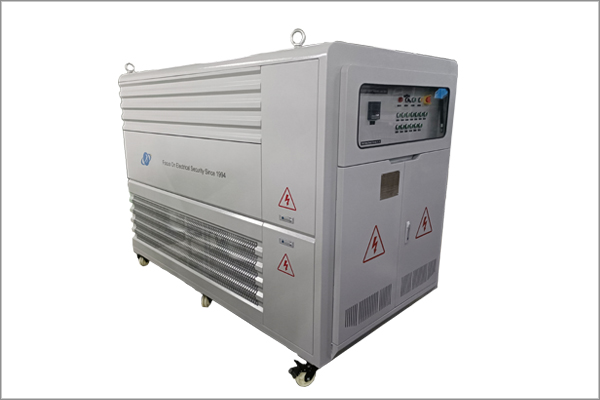Requirements for the Operating Environment of Resistive Load Banks
Time:2024-07-29
The resistive load bank, as a crucial electronic testing instrument, is widely utilized in power, telecommunications, and various manufacturing facilities for equipment performance testing and maintenance. Its high precision, stability, and repeatability make it an indispensable tool for electronic device manufacturers, research institutions, and scientists. However, to ensure the proper functioning and prolong the lifespan of the resistive load bank, its operating environment must meet a series of stringent requirements.
I. Temperature Requirements
The operating temperature of the resistive load bank must be maintained within a suitable range, typically recommended between -20°C and 40°C. Excessive temperatures can cause overheating of internal components, affecting the device's performance and longevity. Conversely, excessively low temperatures may also hinder normal operation. Therefore, when deploying a resistive load bank, it is essential to consider the ambient temperature and take necessary temperature control measures, such as installing air conditioners or heaters, to ensure the temperature remains within the optimal range.
II. Humidity Requirements
Humidity is equally crucial for the operation of the resistive load bank. Excessive humidity can lead to condensation inside the device, potentially causing short circuits and other faults. Hence, the operating humidity of the resistive load bank should be controlled within a relative humidity range of 50% to 80%. In humid environments, dehumidification measures such as installing dehumidifiers or using desiccants are necessary to keep the interior dry.
III. Altitude Requirements
At higher altitudes, the air is thinner, with lower oxygen content, which may affect the heat dissipation and normal operation of the resistive load bank. Therefore, when selecting a resistive load bank, its suitable altitude range must be considered. For applications in high-altitude areas, models with enhanced heat dissipation capabilities and higher adaptability should be chosen.
IV. Dust and Corrosion Resistance Requirements
Dust and corrosive environments can adversely affect the heat dissipation and circuitry of the resistive load bank. Hence, dust levels in the operating environment should be minimized to maintain cleanliness. In coastal or industrial areas with corrosive environments, the resistive load bank must possess corresponding corrosion resistance capabilities to withstand harsh conditions.
V. Electromagnetic Interference (EMI) Resistance
The operating environment of the resistive load bank may contain numerous sources of EMI, such as transformers and motors generating electromagnetic noise. To ensure normal operation and stability, the resistive load bank must possess a certain level of EMI resistance. During design and selection, attention should be paid to its electromagnetic compatibility (EMC), and necessary shielding and filtering measures should be taken.
VI. Power Requirements
Stable power supply is the foundation for the proper functioning of the resistive load bank. Therefore, it is essential to ensure that the power supply connected to the device is stable and reliable, avoiding voltage fluctuations and power failures that could damage the equipment. In some cases, backup power equipment such as UPS may be required to address sudden power failures.
VII. Other Considerations
In addition to the above requirements, attention should also be paid to the use and maintenance of the resistive load bank. During operation, follow operating procedures to avoid overloading and improper handling. Regular maintenance and inspections are necessary to check for wear and aging of internal components, with timely replacements of damaged parts. Furthermore, safety precautions must be observed to prevent electrical shocks, fires, and other accidents.
In summary, the operating environment of the resistive load bank must meet stringent requirements, including temperature, humidity, altitude, dust and corrosion resistance, EMI resistance, and power supply. Only by operating and maintaining the equipment in a suitable environment can its normal functioning be ensured and its lifespan extended.
News Recommendation
-
 2024-09-11
2024-09-11TRIUMPH LOAD EXHIBITING AT Enlit Europe 2024 -BOOTH 7.H08
-
 2023-04-21
2023-04-21TRIUMPH LOAD EXHIBITING AT DATA CENTER WORLD GERMANY 2023-BOOTH F909
-
 2023-04-06
2023-04-06TRIUMPH LOAD EXHIBITING AT ELECTRIC POWER TECH KOREA 2023 – Booth G109
-
 2022-05-05
2022-05-05What is the role of ac load bank for power supply?
-
 2022-05-05
2022-05-05What is the role of the load bank?


